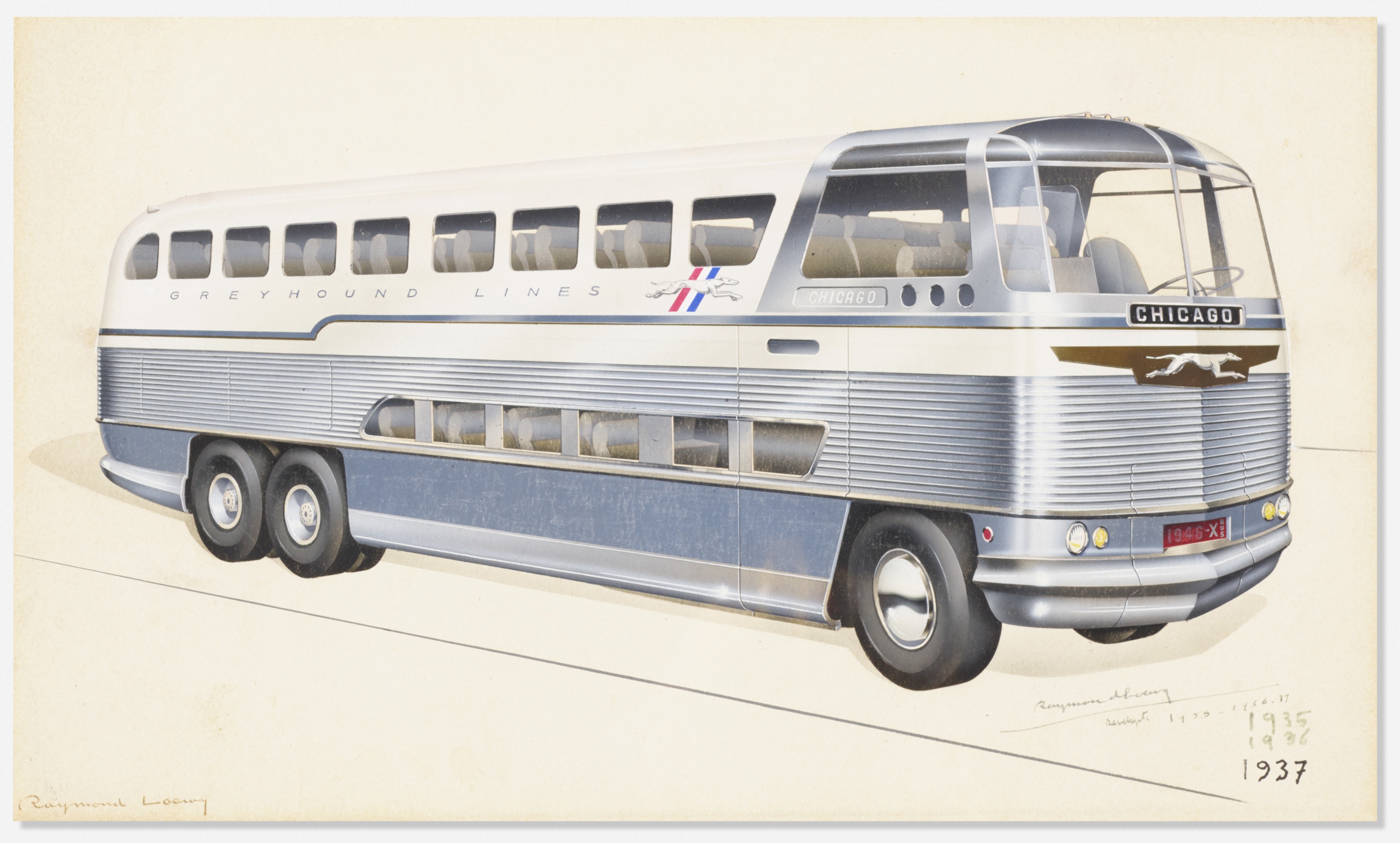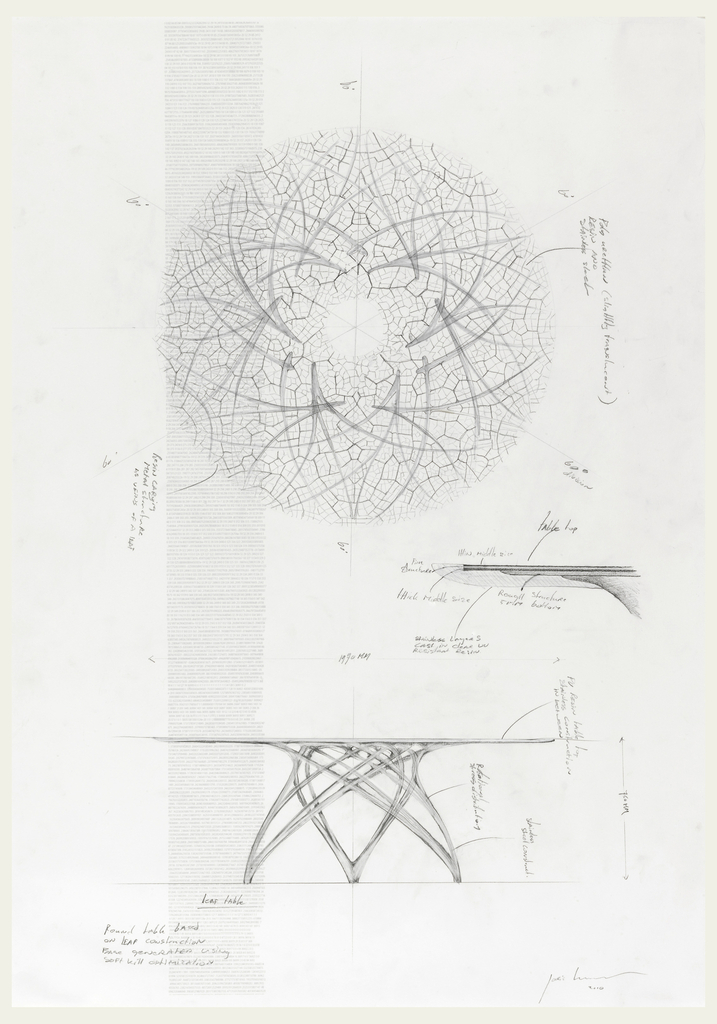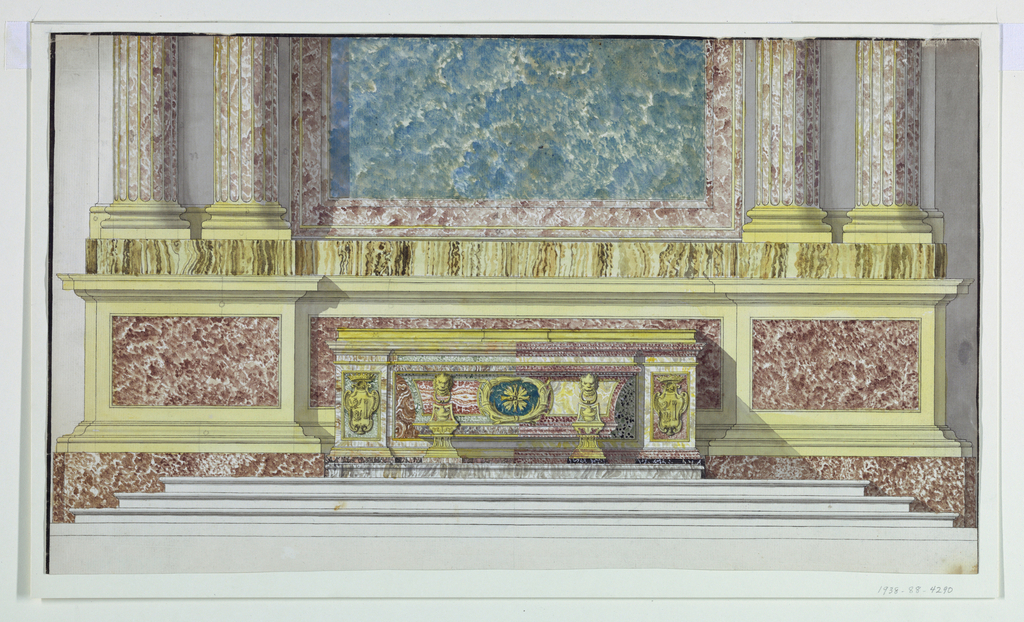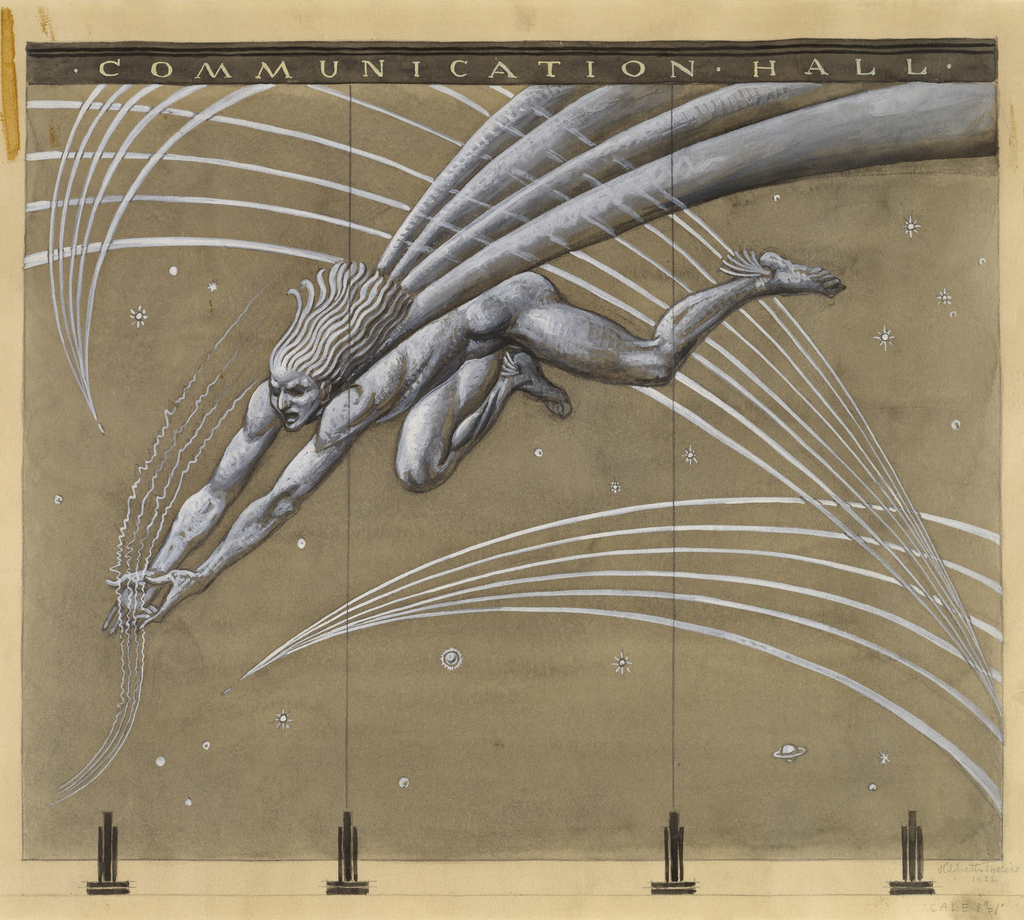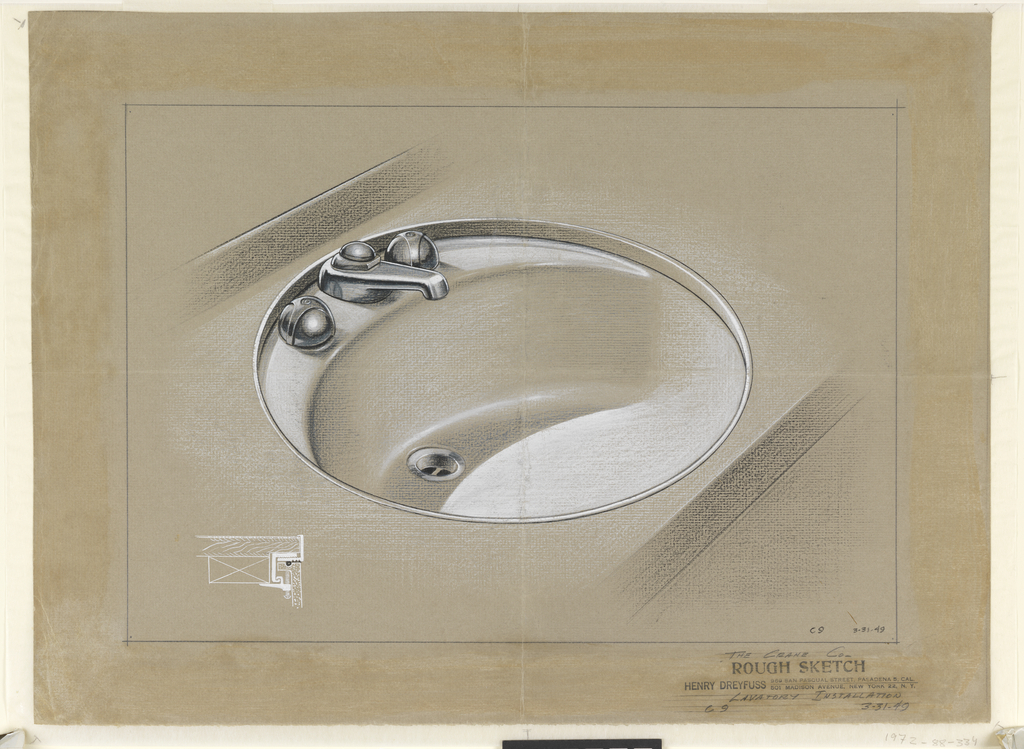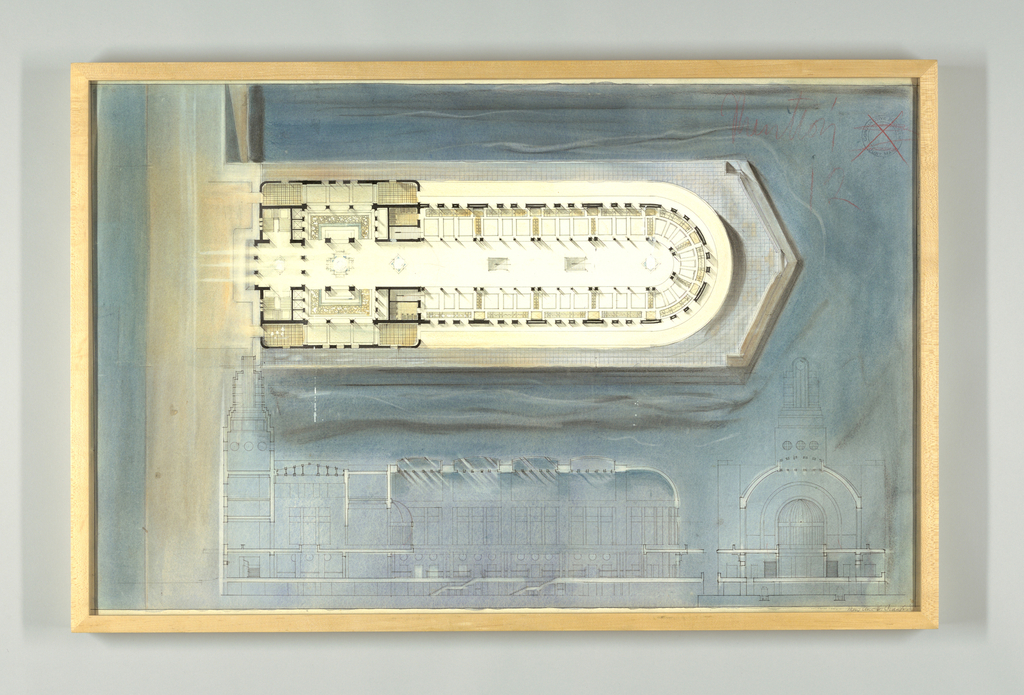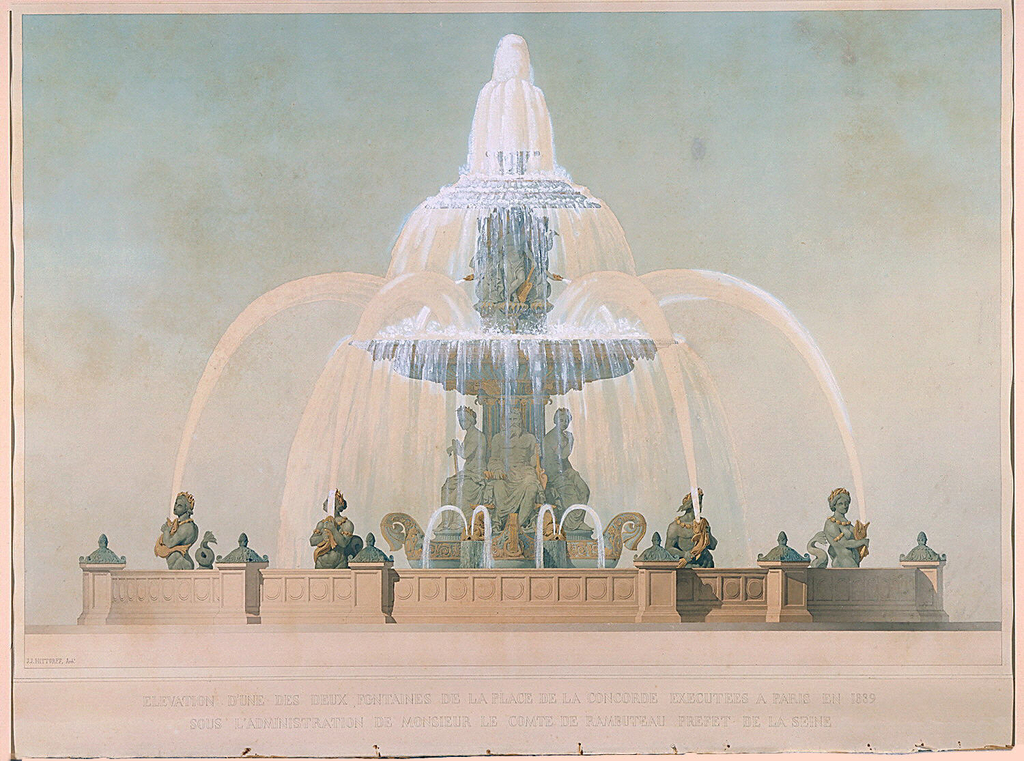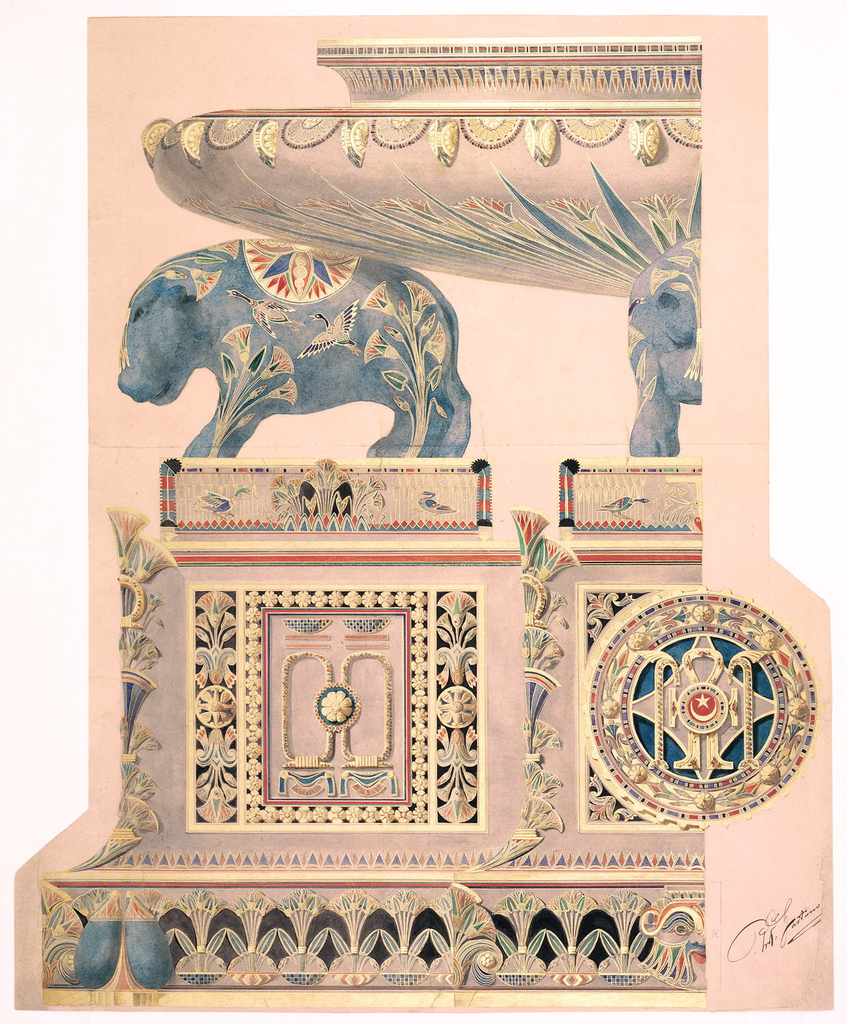On July 9, 1947, Look magazine ran a feature article on the fastest growing form of transportation in America: intercity buses. “Bus travel, according to the sworn word of many highway fans,” the author wrote, “is the best way to make a sightseeing holiday trip.”[1] The post-war boom in bus travel was indebted, in part,...
For more than a decade, Dutch designer Joris Laarman and his team at Joris Laarman Lab have been looking to nature for information and inspiration. As he writes in the newly published book Joris Laarman Lab, “our digital age makes it possible to not just use nature as a stylistic reference, but to actually use the...
This striking drawing, titled Altar Mensa for the Borghese Chapel in the Santa Maria Maggiore, is by a lesser known but influential architect, Mario Asprucci the Younger. Using water color paint to achieve vibrant illustrations of various, colored marbles and metals, Asprucci captures the architecture’s sumptuous materials and allegorical themes. The Borghese Chapel was originally...
Hildreth Meière (1892-1961) was a distinguished Art Deco muralist, painter, mosaicist, and decorative artist often applauded for her defiance of normative standards against the professional success of females. In 1936 she wrote, “It drives me wild to be spoken of as ‘one of the best women artists’. I’ve worked as an equal with men, and...
The 1940s after World War II (1939-1945) marked a phase of industrial design that centered on the consumer. Coined by prolific industrial designer Henry Dreyfuss (1904-1972) as the “Decisive decade”, manufacturers began acquiring prestige by redesigning products that met the needs of a changing society.[1] Populations had grown extensively from incoming immigrants; housing for returning...
For her first assignment as an architecture student at the Massachusetts Institute of Technology (MIT), Mary Ann Crawford was given a sheet of paper, twelve hours, and a problem: design an entrance to an architectural school. Crawford’s submission was well-received by her professor, but he gave her a cautionary warning. “You want to be careful...
This splendid presentation drawing was prepared for the prestigious civic commission to redesign the Place de la Concorde, one of the great public squares of Paris. When the viceroy of Egypt, Muḥammad ʿAlī, offered France an obelisk from the reign of Ramses II as a gift in 1831, the German-born designer Jakob Ignaz Hittorff was...
Throughout the 19th century, Egypt was considered to be nominally a province of the Ottoman Empire, although both France and Britain worked to assert influence and control in the country. Isma’il Pasha was a young man when succeeded his uncle as Khedive (Viceroy) of Egypt in 1863. Isma’il presided over the country as it was...
